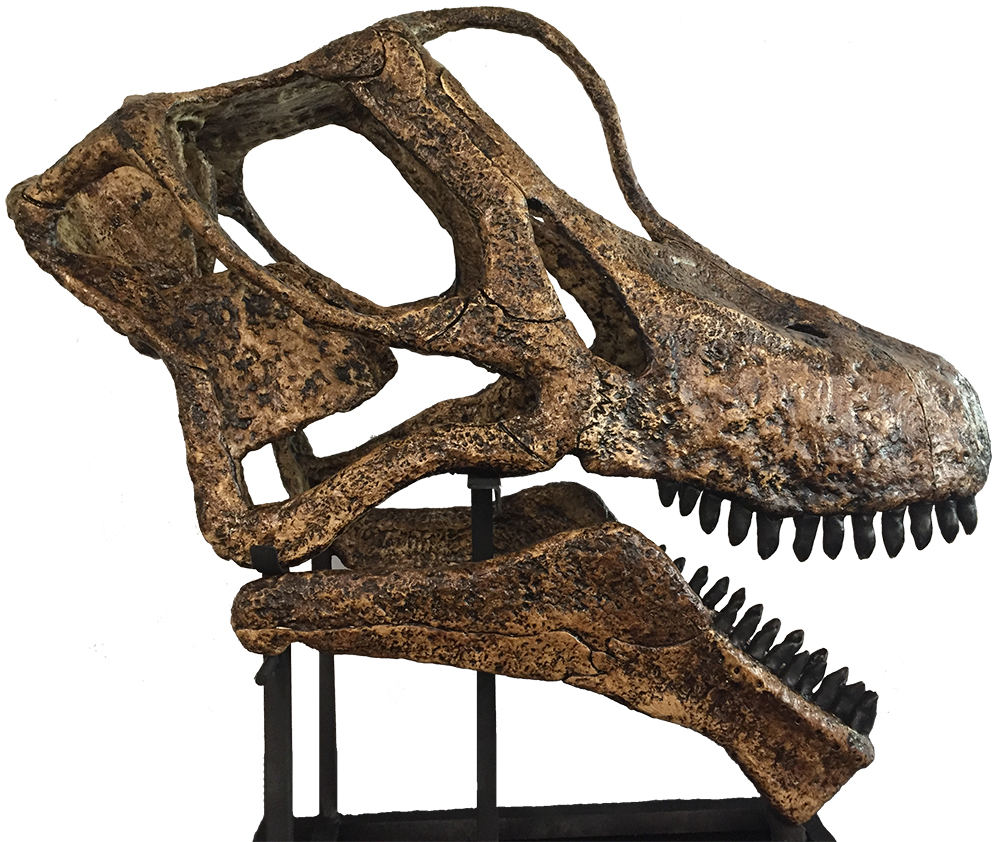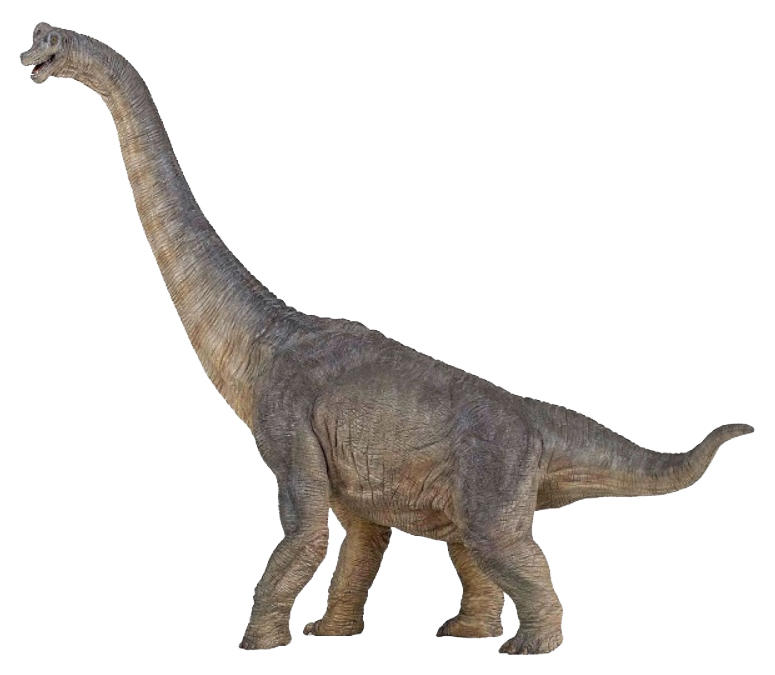Late Jurassic (~154-150 MYA) - sauropod dinosaur

Brachiosaurus was a genus of sauropod dinosaur that lived in North America during the Late Jurassic, about 154–150 million years ago. Its name is Greek for ‘arm lizard’ a tribute to its forelimbs being longer than its rear limbs, which caused its back to slope down from the shoulders towards the hips. Modern giraffes have a similar pose as it is well suited for high browsing. Brachiosaurus may have been able to feed on vegetation up to ten meters above the ground. Originally discovered in 1903 in North America, for a long time Brachiosaurus was the heaviest known dinosaur. However, in the 1990s the remains of even more immense titanosaur sauropods were discovered in South America.
Although Brachiosaurus’ skull looks massive, it was remarkably small relative to the animal’s body size. Moreover, the bones that comprised the skull were thin-walled and hollow, making the skull much lighter than it initially appears. Chisel-like teeth were concentrated towards the front of the mouth, to strip leaves off branches. A lack of teeth towards the back of its jaws suggests Brachiosaurus simply swallowed its food without chewing to process it in its immense gut. Large nasal openings are located close to the eyes, but in life soft tissue most likely covered these large nares, with the nostril openings lying close to the front of its large snout. The skull’s huge nasal openings may have served as a resonating chamber for sounds and to cool the brain.
In life, the bones of Brachiosaurus skulls were so lightweight and delicate that their skulls have only been found as broken fragments. Hence this skull is a scientific reconstruction based on partial remains, rather than a cast of an intact skull. The distinctive high nasal crest of this form comes from remains found in Tanzania in the early 1900s that are quite distinct from the North American Brachiosaurus. Hence, the African forms are now known as Giraffatitan, although they are still commonly called Brachiosaurus.
